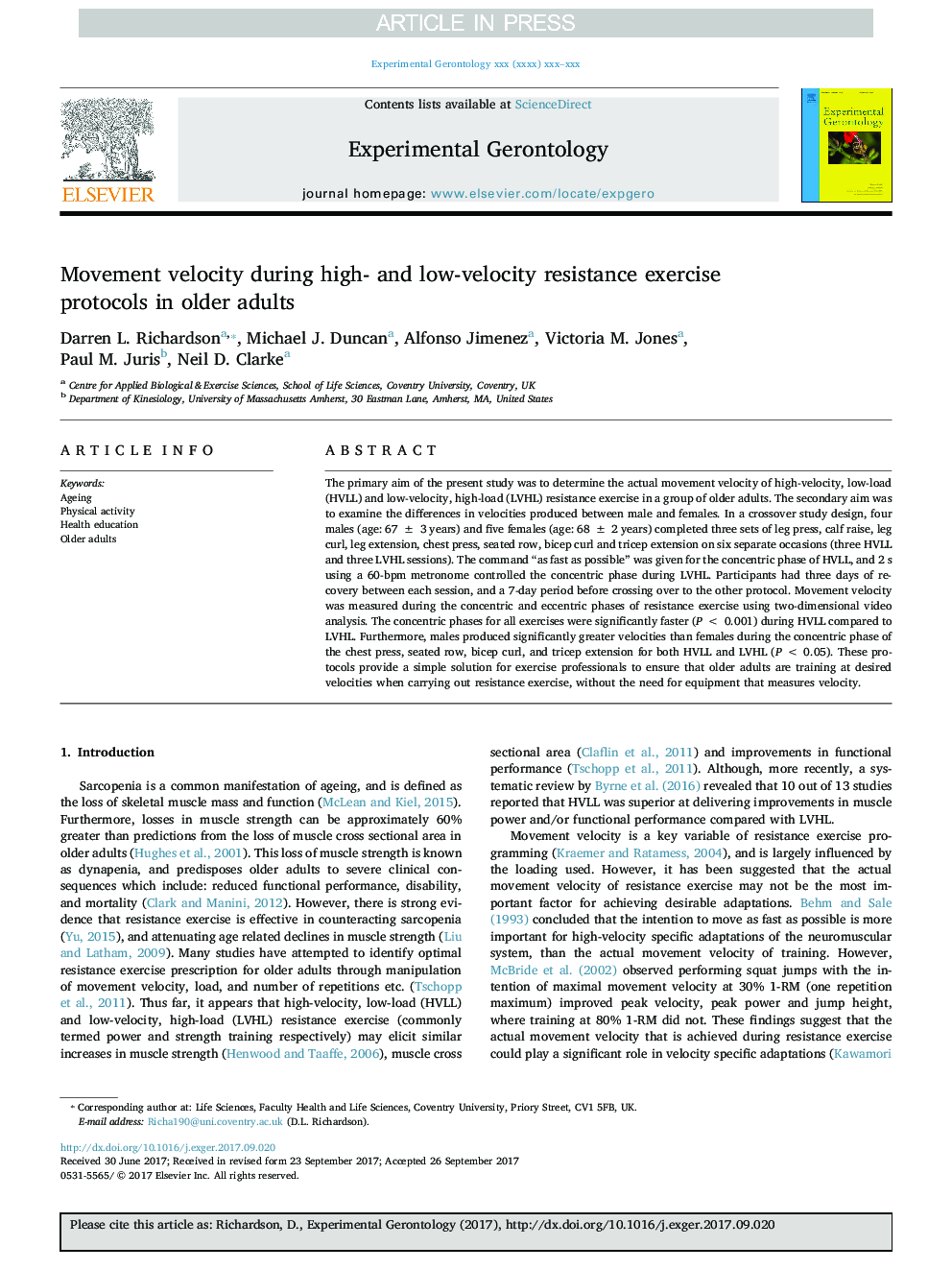| Article ID | Journal | Published Year | Pages | File Type |
|---|---|---|---|---|
| 8262283 | Experimental Gerontology | 2018 | 8 Pages |
Abstract
The primary aim of the present study was to determine the actual movement velocity of high-velocity, low-load (HVLL) and low-velocity, high-load (LVHL) resistance exercise in a group of older adults. The secondary aim was to examine the differences in velocities produced between male and females. In a crossover study design, four males (age: 67 ± 3 years) and five females (age: 68 ± 2 years) completed three sets of leg press, calf raise, leg curl, leg extension, chest press, seated row, bicep curl and tricep extension on six separate occasions (three HVLL and three LVHL sessions). The command “as fast as possible” was given for the concentric phase of HVLL, and 2 s using a 60-bpm metronome controlled the concentric phase during LVHL. Participants had three days of recovery between each session, and a 7-day period before crossing over to the other protocol. Movement velocity was measured during the concentric and eccentric phases of resistance exercise using two-dimensional video analysis. The concentric phases for all exercises were significantly faster (P < 0.001) during HVLL compared to LVHL. Furthermore, males produced significantly greater velocities than females during the concentric phase of the chest press, seated row, bicep curl, and tricep extension for both HVLL and LVHL (P < 0.05). These protocols provide a simple solution for exercise professionals to ensure that older adults are training at desired velocities when carrying out resistance exercise, without the need for equipment that measures velocity.
Related Topics
Life Sciences
Biochemistry, Genetics and Molecular Biology
Ageing
Authors
Darren L. Richardson, Michael J. Duncan, Alfonso Jimenez, Victoria M. Jones, Paul M. Juris, Neil D. Clarke,
